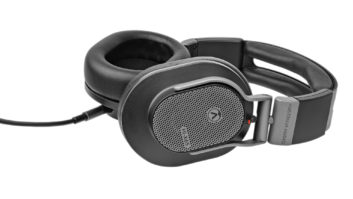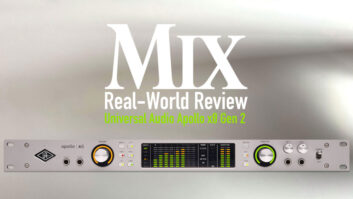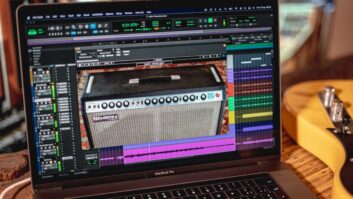
| MIX VERDICT: Universal Audio Dream ’65 Reverb Amplifier |
| THE TAKEAWAY: “No matter your workflow, you will surely be impressed with the authentic guitar amp sound and playing experience.” |
| COMPANY: Universal Audio • www.uaudio.com PRICE: $399 PROS: • Authentic touch and feel. CONS: • Amp knobs and switches can only be edited in accompanying app. |
The Dream ’65 Reverb Amplifier is one of three amp-emulating pedals in Universal Audio’s UAFX effects line, its two siblings being the Ruby ’63 Top Boost Amplifier (based on a Vox AC30) and Woodrow ’55 Instrument Amplifier (based on a “tweed” Fender Deluxe). As the name hints, the new pedal is based on a ’65 Fender Deluxe Reverb.
The three pedals have many similar features, but each has a unique sound and control set. This review is specific to the Dream ’65 Reverb Amplifier. Although it offers many handy features for live use, I’ll concentrate here on its utility in the studio.
The Dream ’65 Reverb Amp is housed in a heavy-duty metal chassis. It runs on a 9V DC power supply, which is not included. It should run fine on a pedalboard’s 9V power supply.
The I/O features two 1/4-inch inputs and two outputs, so you can connect mono or stereo sources. Controls include Volume, Reverb, Output, Bass, Treble and Boost. The latter two also function as the Speed and Intensity for the gorgeous-sounding Vibrato effect.
The Volume knob governs input gain while the Output functions as a master volume. The higher the gain, the more overdrive. You can use the Boost knob to push the saturation further and change the overdrive characteristics depending on which of the three Amp Mod settings you choose.
The Reverb accurately re-creates the sound of an amp’s spring reverb. The Speaker switch lets you choose between emulations of different speaker cabinet configurations (each of which was modeled through a different mic). If you’re using the pedal connected to an actual guitar amp, you can turn off the cabinet simulation.
Universal Audio Sphere DLX, LX Modeling Mics Launch
You’ll get the most out of the Dream ’65 Reverb pedal if you register it on the UAD site and download the free UAFX control app (iOS and Android). You can use the pedal without the app, but it won’t have all its functionality.
The app communicates with the pedal over Bluetooth, and when open and paired, you get several benefits, including three additional speaker cabinet emulations. It also provides access to banks of Factory and Artist presets, along with a User category for saving your settings. I was disappointed to discover that you can’t edit any of the amp knobs and switches from the app, only from the pedal itself.
With the pedal connected to my audio interface, I found it easy to quickly dial in settings—both clean and overdriven—that sounded like they were from a well-miked vintage Deluxe Reverb. The touch and feel when playing guitar through the pedal are amazingly authentic—more so than with any amp modeling plug-in I’ve used.
Another advantage to recording direct through the Dream ’65 pedal is that you don’t have to worry about the volume from an actual guitar amp. Use it for late-night sessions or to avoid bleed when tracking a band in a single room. Because the pedal is creating the amp simulation, you can monitor with zero latency.
If you prefer recording dry DI guitar parts to keep your sound options open for the mix, you could always reamp them through the Dream ’65 pedal later, although you’ll need a separate reamp box to do so.
No matter your workflow, you will surely be impressed with the authentic guitar amp sound and playing experience that the Dream ’65 Reverb Amplifier pedal provides. It’s a potent new option for recording electric guitar.







